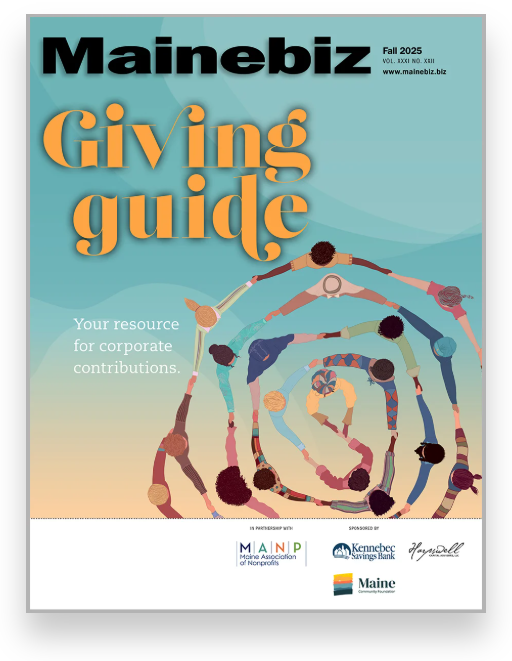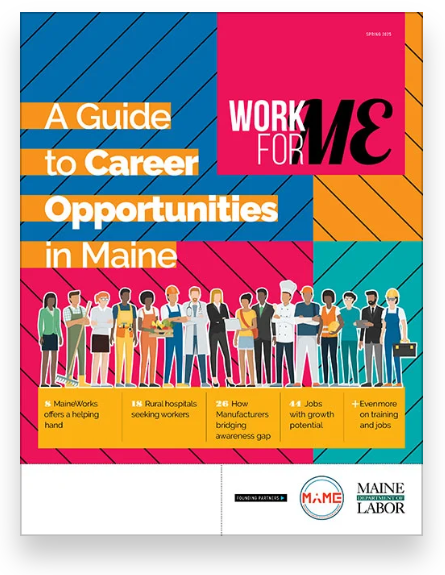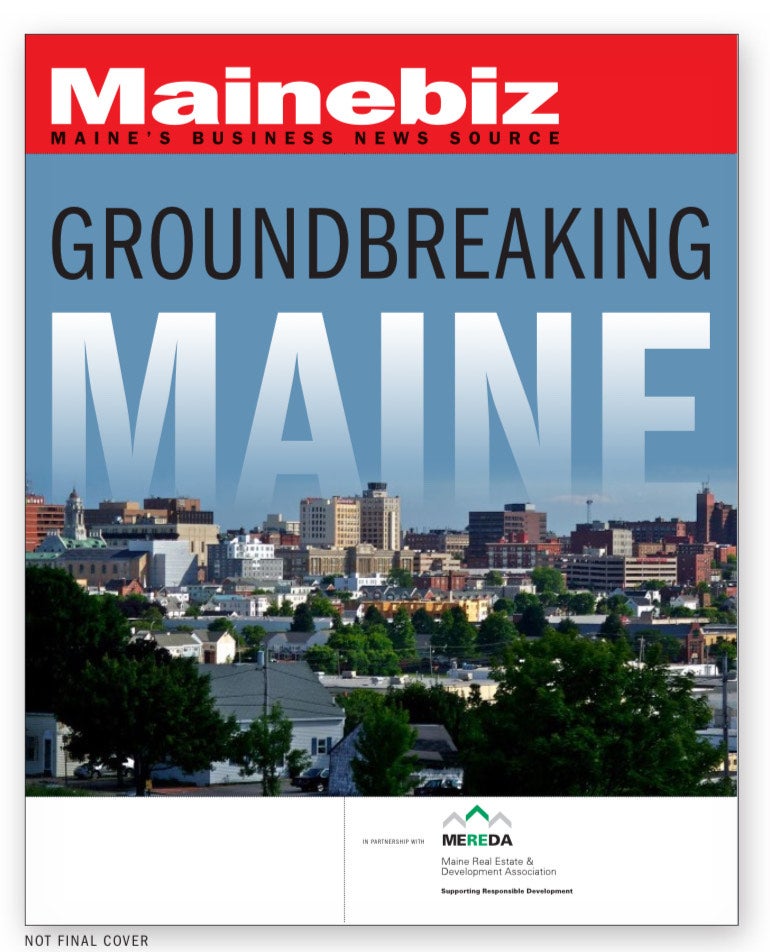Processing Your Payment
Please do not leave this page until complete. This can take a few moments.
- News
-
Editions
View Digital Editions
Biweekly Issues
- November 03, 2025
- October 20, 2025
- October 6, 2025
- September 22, 2025
- September 8, 2025
- August 25, 2025
- + More
Special Editions
- Lists
- Viewpoints
- Our Events
- Calendar
- Biz Marketplace
Gridlock | It'll cost a billion dollars to even put a dent in Portland's growing traffic problem. So what's a commuter to do?
Greater Portland, we have a problem. You may have noticed it. It's an affliction most common to those who commute daily into Portland from the surrounding environs. Some curse it, while for others the scourge of traffic — the congested arteries, idling autos and ubiquitous red lights — has become as ordinary as brushing one's teeth in the morning.
If you live along the I-295 corridor — in towns such as Yarmouth or Falmouth, for example — you're luckier than most of your commuting comrades who live in Gorham or Cumberland or Windham or Bar Mills. The arteries bringing those folks into Portland — Forest Avenue, Washington Avenue, Brighton Avenue — are inadequate for the present amount of traffic on them and often are choked with cars during the morning and afternoon commutes.
And, despite efforts to the contrary, officials say the traffic is not likely to improve any time soon.
Relatively speaking, traffic congestion in the Portland area is not that bad. At the moment, a trip in Portland during the peak afternoon rush hour will take on average four percent longer than a trip during off-peak hours, according to a recent Reason Foundation study by David Hartgen, a professor of transportation studies at the University of North Carolina at Charlotte. That level of congestion is on par with Fargo, N.D., but it's infinitesimal when compared to the 75% increase in travel time during rush hour experienced by commuters in the country's most congested city, Los Angeles, or the 51% increase experienced by Washington, D.C.'s commuters.
But many people choose to live and work in Maine for its iconic way of life and rural charm, so bumper-to-bumper traffic on Forest Avenue or navigating a busy stretch of I-295 — both of which will add well over four percent to a morning commute — can seem horrendous.
The source of this traffic is not a mystery. People have moved to the suburbs in droves over the last couple decades, meaning more people driving farther and spending more time in the car; often alone. At the same time, the investments needed to upgrade the roads to carry this increased suburban and commuter traffic have not been adequate. But that's not for lack of trying.
There are people, such as John Duncan, director of the Portland Area Comprehensive Transportation Committee, whose job it is to look at the transportation system in the region and develop strategies to help combat congestion.
PACTS, as Duncan's group is called, in June released a long-range transportation plan for the 15 communities it represents, from Saco and Biddeford to Freeport and North Yarmouth. PACTS — like many similar groups in urban U.S. areas — was created in 1974 as a way for the federal government to funnel transportation dollars to the regional level.
The plan, titled "Destination Tomorrow," highlights several needs, chief among those to maintain and, where possible, improve the existing infrastructure. Beyond that, it advocates for continued investment in public transit and — though only when absolutely necessary — the construction of added capacity (i.e. new roads). It also advocates for the marriage of municipal land use policy with transportation management to help combat issues such as sprawl.
However, in the end, the plan is not a cure-all. Despite its proposed strategies and its estimated need over the next 20 years of slightly more than $1 billion to maintain and improve the transportation system, the plan still projects the traffic to worsen. And that's not taking into account the fact that Duncan expects only about half that $1 billion to be available during the period. "It's not going to get better fast," says Duncan, "and it's probably going to get worse before it gets better because there's not enough money to improve the roads."
Others such as Hartgen, an Orono native, say small cities like Portland are approaching the problem of traffic congestion the wrong way and posit that severe congestion can be fixed without breaking the bank. The debate swirls around where to spend the money: Should we buy busses and curb the number of cars on the road, or fix and upgrade roads to relieve congestion? Well, that's the hard part.
My life as a commuter
On a recent sunny February morning, I commuted to work from the suburbs. Though I live on the Portland peninsula, I drove to work that day from West Gorham. It wasn't an arbitrary choice. I wanted to experience the bottleneck at the center of Gorham that so many people try to avoid during peak commuting hours. This intersection, where Route 25 meets Route 114 and South Street, is designed to handle roughly 3,000 cars per peak afternoon hour, according to the Maine Department of Transportation. The actual number of cars using the intersection, however, during the peak afternoon hour is roughly 3,500 cars, which means it's approximately 19% over capacity.
I also wanted to experience that route because it is one that is expected to improve dramatically in the future, once the Maine Department of Transportation constructs the Gorham Bypass, a road that will skirt the center of town and make a commute from outlying towns like Buxton and Standish much easier. The Maine Department of Transportation hopes to begin construction this summer on the $25 million first phase of the project.
That morning I left West Gorham at about 7:30 a.m. and headed east on Route 25. As I drove towards the University of Southern Maine's Gorham campus, the traffic didn't seem so bad. But as soon as I came upon the campus and the spot a little farther on where Route 4 and Route 202 merge with Route 25, I joined the end of a long line of cars. We crept ahead slowly as the light at the center of town, still a half-mile further, let through one batch of cars at a time.
After creeping through traffic towards the Gorham intersection, I continued on Route 25 toward Westbrook. I followed other commuters on the New Portland Road shortcut, which was fairly empty and allowed me to make up some time. But as soon as the road reunited with Route 25, which eventually turns into Brighton Avenue when it enters Portland, the bumper-to-bumper traffic began anew.
It wasn't always like this. Gorham's population has increased 40% between 1980 and 2000, and 145% since 1960, according to census data cited in the PACTS' plan. Similarly, towns like Buxton and Standish have experienced population increases. The daily traffic on Route 25, which was designed to handle a rural traffic load, has increased from 7,000 cars a day in 1960 to 17,000 cars a day in 2000, according to PACTS. "These roads were built so many years ago and they were not designed to handle the traffic that's on them," Duncan says.
In the end, my commute from West Gorham into downtown Portland took roughly 45 minutes, probably 10 minutes of which I estimate was spent reading the fine print on the bumper stickers on the car in front of me. But during that trip, I was just a spectator, an interloper in the often frustrating world of the daily commuter. (For the story on one commuter's 50-minute drive to and from Portland, see "Pasture to parking lot" below.)
Fixing choke points
So what to do? When you boil it down, there are really two ways to relieve traffic congestion: build new roads or reduce the number of cars on existing roads. Both are easier said than done.
Building new roads is a costly and often disruptive process. The Gorham Bypass, for instance, will affect roughly 40 homeowners and see several homes be taken by eminent domain. And getting cars off the road means changing driving habits, which these days are firmly planted in the one-driver-per-car camp.
But the real challenge is finding enough money to fix greater Portland's transportation problems, says Duncan. Of the $1 billion PACTS says is needed over the next 20 years to maintain and improve the region's roads, it's estimated that only $501 million will be made available.
The Maine Better Transportation Association in Augusta is working with the state to allocate more funds for transportation projects, but the organization acknowledges it's a tough fight to win. "Transportation has become a diminishing and diminishing priority for state government," says Maria Fuentes, executive director of the MBTA. "And until things get any worse, decision makers aren't going to pay attention because they have so many other high-profile needs they are trying to fill."
Since building roads is disruptive and expensive, when it comes to fixing the problems, the first place to look is at critical intersections — the "choke points," as Duncan calls them. That could mean adding turning lanes or synchronizing traffic lights. Today, three-quarters of the 66 key intersections in PACTS' 15-town region are operating at or over capacity during the afternoon peak hour, according to PACTS. Peak hours vary from intersection to intersection, and PACTS estimates that 59 of these 66 intersections, or 89%, will be at or over capacity by 2025. "It's more feasible to increase capacity or address congestion issues at an intersection than to build wider roads," Duncan says.
Some have put their faith in public transit, but the numbers aren't comforting. Driving habits have only worsened over the last several years: Between 1990 and 2000 the number of people who carpooled in Cumberland County dropped from almost 18,000 to little more than 16,000, according to 2000 U.S. Census data. Consider also that the county's working population increased 16.5% during the same period.
The "Destination Tomorrow" plan says public transportation may help relieve some traffic problems. But the plan cites a need of more than $150 million for the maintenance and expansion of bus service, possibly to towns like Windham and Gorham. The Portland bus service, METRO, carried almost 1.4 million people in 2005. But if you divide those bus riders by the number of working days in a year, then divide that by two to account for a commuter's morning and afternoon trip, you realize that only slightly more than 2,700 individuals — or less than one percent of all commuters — use the bus.
And here's where the ideas differ. Hartgen wonders why the PACTS plan allocates roughly 15% of $1 billion on a transit system that serves less than one percent of commuters. He says people are "totally naïve" if they think investing in public transit in a small city like Portland will significantly relieve congestion. He points out that even if the number of commuters who used the bus were to triple, it wouldn't even put a dent in the congestion on our roads. It's a mistake cities all over the country are making, Hartgen says. "The problem is priority," he says. "These cities have bet the farm on a change of travel behavior that is so vast it won't happen."
"Portland depends on private transportation," adds Hartgen. "It depends on reaching out for workers from the surrounding communities, and those workers then take the higher salaries back to their communities. It's the essence of the social contract that drives the regional economy."
For Duncan, investing in public transit is an obvious choice because it offers an alternative to driving gas-guzzling, emissions-spewing automobiles. But he admits an investment in public transportation does not mean that people will necessarily use it. "If we doubled or tripled the amount of bus service in the next two years, but the cost of driving did not increase, we would not get a whole lot more people riding the bus," Duncan says. "The primary impetus for people to ride the bus is if the costs increase to own a car and operate it."
The world through a windshield
One problem with the PACTS plan is that even if $1 billion was available to be spent on all the projects outlined in the study, Duncan admits the effect it would have on overall congestion would be very modest. "A lot of that billion dollars is spent on paving roads for the next 20 years, and buying buses to replace buses that get old, and buying new buses to expand bus service, and widening the Maine Turnpike," Duncan says. "We're not spending $1 billion on adding capacity."
One measurement of congestion PACTS uses is vehicle miles traveled and vehicle hours traveled. At the current rate, and without funding any future road projects, PACTS estimates VMT in the region to increase 25% by 2025, and VHT to increase 33% during the same period. By contrast, if the $1 billion were available and every project were funded, VMT would increase even more, by 25.8%; and VHT would still increase 31.2%.
Hartgen says forget about spending so much on public transportation and spend money on relieving congestion. His study for the Reason Foundation, a Los Angeles-based libertarian think tank, estimates that $131 million spent over the next 20 years would relieve severe congestion in the Portland area. "That's what people want. They want reliable, reasonable travel times," he says.
In the end, though, the problem of traffic congestion rests on the shoulders of everyone who drives a car to work alone every day. But the blame is hard to place. Whether you have to pick up the kids after work, or stop by the grocery store on your way home, a car is necessary in a place as spread out and rural as the suburbs of Greater Portland.
As people keep moving to more rural surroundings while they keep their good-paying jobs in Portland, traffic will continue to get worse. Sure, work will be done to relieve congestion where possible, but these projects — the extra turning lane here, the lengthened off ramp here — are simply band-aids for a system that is over capacity, according to people like Doug Fortier, director of public works in Windham. "Ultimately it's capacity, and how they're going to come up with money I don't know," Fortier says. "You do the minor things you can, but beyond that there's really not a lot you can do."
And with funding still hard to come by — Duncan says federal transportation funding has decreased since the beginning of the Iraq war — at least Mainers have nice scenery to check out as they're stopping-and-starting from Buxton to Portland. Try telling that to the gridlocked commuter in Newark.
Pasture to parking lot
The 55-minute commute is even more painful for Maritato because he remembers when the same morning drive would take him only 40 minutes. The rise of the "bedroom communities," says Maritato, referring to towns such as Waterboro and Hollis, "have had a noticeable impact on the infrastructure."
The population in these surrounding towns has increased 127% between 1960 and 2000, and is forecasted to continue growing, according to the Portland Area Comprehensive Transportation Committee, known as PACTS. "There are so many reasons people are moving out to the suburbs," John Duncan, director of PACTS, says. "The land is cheaper, the taxes have been less, and if there are new roads then it's easier to get there than it used to be."
Duncan's last comment highlights a Catch-22 that transportation officials must cope with. The improvement of roads in these rural communities, while needed to keep the roads safe and to relieve congestion in the face of more residents, also tends to contribute to sprawl. "For the last 20 years it's been recognized that there's a lot of sprawl throughout the country, and Maine is no exception," Duncan says. "New roads have been one of many factors in that sprawl."
But Maritato has come to terms with the traffic. "I'd much rather be doing something differently with my time," he says. "But it is what it is. The situation is that the better jobs are in the cityÂ… and if you like rural lifestyles you have to drive farther and farther away to get there."
Mainebiz web partners

The Giving Guide
The Giving Guide helps nonprofits have the opportunity to showcase and differentiate their organizations so that businesses better understand how they can contribute to a nonprofit’s mission and work.
Learn More
Work for ME
Work for ME is a workforce development tool to help Maine’s employers target Maine’s emerging workforce. Work for ME highlights each industry, its impact on Maine’s economy, the jobs available to entry-level workers, the training and education needed to get a career started.
Learn More
Groundbreaking Maine
Whether you’re a developer, financer, architect, or industry enthusiast, Groundbreaking Maine is crafted to be your go-to source for valuable insights in Maine’s real estate and construction community.
Learn more-
The Giving Guide
The Giving Guide helps nonprofits have the opportunity to showcase and differentiate their organizations so that businesses better understand how they can contribute to a nonprofit’s mission and work.
-
Work for ME
Work for ME is a workforce development tool to help Maine’s employers target Maine’s emerging workforce. Work for ME highlights each industry, its impact on Maine’s economy, the jobs available to entry-level workers, the training and education needed to get a career started.
-
Groundbreaking Maine
Whether you’re a developer, financer, architect, or industry enthusiast, Groundbreaking Maine is crafted to be your go-to source for valuable insights in Maine’s real estate and construction community.
ABOUT
NEW ENGLAND BUSINESS MEDIA SITES
No articles left
Get access now
In order to use this feature, we need some information from you. You can also login or register for a free account.
By clicking submit you are agreeing to our cookie usage and Privacy Policy
Already have an account? Login
Already have an account? Login
Want to create an account? Register
Get access now
In order to use this feature, we need some information from you. You can also login or register for a free account.
By clicking submit you are agreeing to our cookie usage and Privacy Policy
Already have an account? Login
Already have an account? Login
Want to create an account? Register





Comments